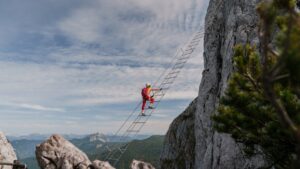Four high priority targets defined as Bayan Mining and Minerals progresses US rare earths hunt

Bayan Mining and Minerals has defined four high priority rare earths target areas at its Desert Star projects. Pic Getty Images
- Bayan Mining finds four high priority rare earth targets at its Desert Star projects in California
- Projects are just 4.5km from North America’s only operating rare earth mine
- Company planning ground surveys and scout drilling
Special Report: A geophysics-led desktop study has identified four coherent, high-priority rare earths target zones at Bayan Mining and Minerals’ Desert Star projects in California.
The targets across the Desert Star and Desert Star North blocks were defined by integrating US Geological Survey airborne geophysical data, satellite spectral analysis and reconnaissance radiometric data.
All of the targets – three in the southern claim block and one in the north – are supported by coincident geophysical and geochemical anomalies.
Bayan Mining and Minerals (ASX:BMM) adds the targets are in structurally favourable positions along the regional corridor that also hosts the Mountain Pass rare earth mine about 4.5km to the southwest and the Colosseum gold mine 3km south.
“The geophysical desktop study has delivered standout results, confirming four priority REE targets across the Desert Star projects,” executive director Fadi Diab said.
“The strong alignment between gravity, magnetic and radiometric anomalies, combined with structural interpretation and surface geochemistry, provides a robust and predictive exploration model.
“The project’s strategic location, just kilometres from North America’s only operating rare earth mine, combined with favourable geology and compelling structural controls, positions Desert Star as a potential cornerstone REE asset for Bayan in the US.”
Desert Star targets
Targets ST1, ST2 and ST3 in the Desert Star block feature strong gravity anomalies, elevated Th/U ratios, radiometric highs and structural intersections consistent with REE-bearing carbonatite systems similar to the nearby Mountain Pass deposit.
ST1 measures 400m by 300m and is at the intersection of dominant NW–SE and NNW-SSE trending structures.
The combination of gravity, magnetic and radiometric criteria is consistent with a dense carbonatite or alkaline intrusive body and supports its classification as a priority REE target.
The 350m by 250m ST2 is northwest of ST1 and is delineated by a discrete gravity high associated with coincident radiometric anomalies and mapped structural corridors.
Elevated thorium/uranium ratios further enhance the potential of this anomaly as an expression of REE-bearing intrusives or structurally controlled alteration.
Meanwhile, ST3 in the southwestern portion of the Desert Star block is characterised by a broad gravity high, reduced magnetic intensity and anomalous thorium/potassium and thorium/uranium radiometric ratios.
The spatial association of the 500m by 300m area with mapped faults and its geophysical expression are analogous to signatures observed at the Mountain Pass carbonatite system.
NT1 covers 400m by 250m on the western margin of the Desert Star North block and is defined by moderate radiation anomalies, a gravity high and localised fault intersections.
It lies within a transition zone from basement gneiss to Cambrian sedimentary units while the structural setting and geophysical characteristics suggest potential for REE mineralisation in a similar structural environment to the Colosseum breccia-pipe system to the south.
Next steps
BMM is planning to carry out detailed ground magnetic and radiometric surveys across Desert Star while a detailed gravity survey will begin shortly.
Data will be integrated with the results of the desktop study and previous surface geochemical sampling to refine the geometry of the defined target areas.
This will provide a robust basis for prioritising zones for follow-up exploration ahead of scout drilling.
“With detailed ground surveys planned, we’re entering a critical phase of field-based target definition,” Diab said.
“Desert Star projects are ideally located in a world-class mineral corridor, and we’re excited about the potential to make a significant REE discovery in this underexplored region of California.”
This article was developed in collaboration with Bayan Mining and Minerals, a Stockhead advertiser at the time of publishing.
This article does not constitute financial product advice. You should consider obtaining independent advice before making any financial decisions.
Related Topics

UNLOCK INSIGHTS
Discover the untold stories of emerging ASX stocks.
Daily news and expert analysis, it's free to subscribe.
By proceeding, you confirm you understand that we handle personal information in accordance with our Privacy Policy.








